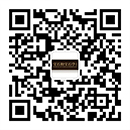摘要:
近年来随着绿松石越来越受到市场欢迎,价格一路上涨。与此同时,以次充好的现象屡见不鲜。因此,绿松石的品质分级显得十分必要。颜色作为评价绿松石品质高低的首要因素,对其进行分类也因此显得格外重要。由于目前市场上95%的绿松石都经过注胶处理,且无色胶对于天然绿松石的颜色起到较好的稳固作用,为便于今后进一步深入开展绿松石颜色分级的研究工作,笔者选取市场上常见的天蓝色到绿色注无色胶绿松石样品,通过紫外-可见-近红外分光光度计测量反射率的方法,根据色度学的计算公式,建立样品的颜色色度坐标,以此对样品颜色的色调、色饱和度及明度进行分析。结果表明,天蓝色至绿色系列的绿松石,主波长主要落在480~500 nm范围内,色饱和度偏低,明度值中等偏上;且在主波长值为480.3 nm处,色饱和度为41%,明度值不高于65%的情况下,出现颜色最好的蔚蓝色。
关键词:
-
绿松石
/
-
色度坐标
/
-
色调
/
-
主波长
/
-
色饱和度
/
-
明度
Abstract:
In recent years, due to the increasing market demand for turquoise, turquoise prices are rising. Therefore, grading the quality for turquoise is very necessary. Turquoise colour is the primary factor in the quality grading, so its classification is of primary importance. Currently in the jewelry market, only 4C diamond grading system is widely recognized by the industry; and such evaluation of turquoise colour still remains in the visual and textual description, lack of objectivity. In this papers, the authors chose 45 pieces of slightly impregated turquoises and 8 pieces of natural untreated turquoises from the market, with colour range of sky blue to green as studying materials. Using the calculation formula of colorimetry, the reflectance values of the samples were converted to a set of chromaticity coordinate values. Then, the authors analyzed the hue, saturation and brightness of the samples. It is found, in the sky blue to green series turquoise, the dominant wavelength mainly falls within the range of 480~500 nm, with low saturation and middle brightness. For the best blue colour sample, the dominant wavelength is at 480.3 nm, the saturation is 41%, and the brightness value is not higher than 65%.



 下载:
下载:

